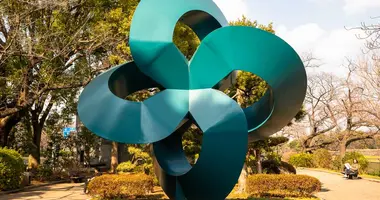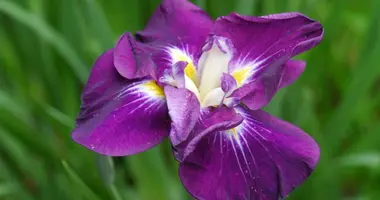Jindai Botanical Garden: A year-round floral paradise in Tokyo
- Published on : 18/04/2024
- by : Japan Experience
- Youtube
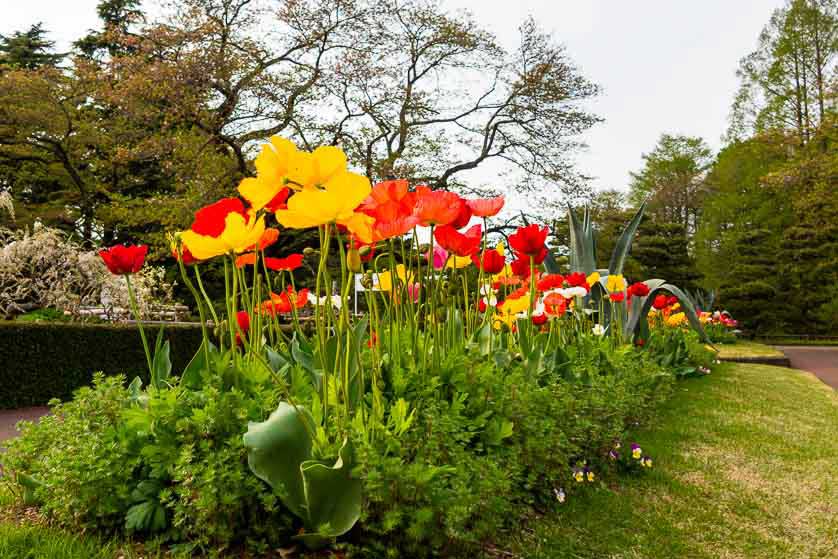
Tulip Garden, Jindai Botanical Garden
Nestled in the heart of Chofu City, Jindai Botanical Garden stands as Tokyo's largest and most diverse botanical wonderland. Spanning an impressive 42 hectares, this horticultural gem showcases over 100,000 trees and shrubs representing approximately 4,500 varieties. From the vibrant hues of cherry blossoms in spring to the rich tapestry of autumn foliage, Jindai Botanical Garden offers a captivating display of nature's beauty throughout the year. As Tokyo's principal botanical garden, it serves not only as a haven for plant enthusiasts but also as a vital center for conservation and education.
Overview and history of Jindai Botanical Garden
Established in 1961, Jindai Botanical Garden has a rich history that predates its official opening. The site's botanical connections stretch back to before World War II when it served as a nursery for trees destined to line Tokyo's streets. After the war, it transformed into the Jindai Green Zone before finally evolving into the public botanical garden we know today.
The garden is uniquely situated on the Musashino Plain, a vast fluvial terrace formed by the ancient alluvial fan of the Tama River. This location provides a diverse landscape that supports a wide range of plant life, including a preserved section of the forest that once dominated the Musashino Plain in pre-modern times. This historical connection to the land adds depth to the garden's significance, making it not just a place of beauty but also a living museum of Tokyo's natural history.
Today, Jindai Botanical Garden is divided into thirty distinct areas, each dedicated to showcasing specific types of flora. This thoughtful organization allows visitors to explore a variety of plant collections, from native Japanese species to exotic tropical plants, all within a single visit.
Seasonal highlights and must-see attractions
Jindai Botanical Garden offers a spectacular array of seasonal attractions throughout the year, ensuring that every visit provides a unique experience. In spring, the garden bursts into life with the blooming of its famous cherry trees and plum blossoms. The cherry blossom garden, home to around 600 trees in several varieties, transforms into a pink and white wonderland from mid-March to mid-April.
As spring transitions to summer, visitors can marvel at the vibrant azaleas, dogwoods, and peonies. The garden's aquatic plant area comes alive with blooming irises and water lilies, creating a tranquil oasis. Autumn brings its own charm with the changing colors of maple leaves and the second blooming of the roses. Even in winter, the garden remains captivating with its collection of camellias and the serene beauty of its carefully maintained landscapes.
One of the garden's most unique features is its preservation of the Musashino Plain's natural forest. This area offers visitors a glimpse into the region's pre-urban ecosystem, making it a must-see for those interested in local ecology and conservation.
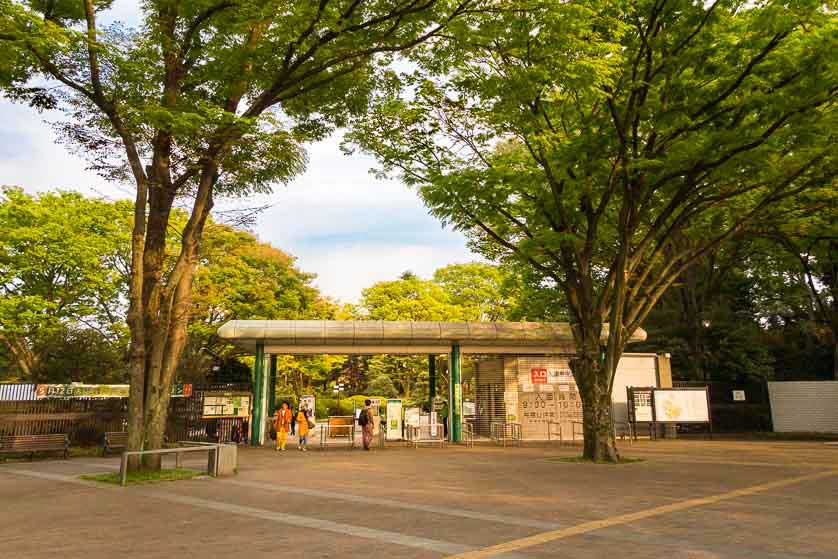
Main Gate of Jindai Botanical Garden
The world-renowned rose garden: A spectacle of colors and fragrances
The crown jewel of Jindai Botanical Garden is undoubtedly its world-famous rose garden. Recognized with an Award of Excellence from the World Federation of Rose Societies, this spectacular area features approximately 5,200 rosebushes representing around 400 different varieties. The rose garden's symmetrical layout, centered around a beautiful fountain, creates a breathtaking visual impact that draws visitors from across Japan and beyond.
Blooming primarily in late May and again in mid-October, the rose garden offers a sensory feast of colors and fragrances. Visitors can admire a stunning collection of treasured roses, including the garden's namesake, the "Queen of Jindai." The garden also showcases a large collection of original rose breeds that have been carefully cultivated since the garden's founding, highlighting Jindai's commitment to horticultural research and development.
During the annual Spring Rose Festival, the garden comes alive with special events and activities, allowing visitors to fully immerse themselves in the beauty and culture of roses. This festival, combining warm weather, sunshine, and a sea of colorful blooms, exemplifies the magical experiences that Jindai Botanical Garden offers.
Exploring the diverse plant collections and themed areas
Beyond the rose garden, Jindai Botanical Garden offers a wealth of diverse plant collections and themed areas for visitors to explore. Each of the thirty areas within the garden focuses on a particular type of flora, providing an educational and visually stunning journey through the plant kingdom.
Near the main gate, visitors are greeted by a vibrant display of azalea bushes, their vivid pinks, whites, and reds creating a striking first impression. The garden's extensive collection of cherry trees includes various species, offering a prolonged hanami (cherry blossom viewing) season.
Other notable areas include:
- The Greenhouse: Home to tropical and subtropical species, allowing visitors to experience exotic plants year-round.
- Natural Woods: Preserving the native trees of the Musashino Plain, offering a glimpse into the area's natural history.
- The Central Lawn: A vast, well-maintained grassy area perfect for relaxation, featuring a distinctive clump of decades-old pampas grass.
- Themed Gardens: Including dogwood, maple, bamboo, and pomegranate gardens, each offering unique seasonal highlights.
The garden also features a wetland annex for aquatic plants, where visitors can admire beautiful irises and other water-loving species. This diversity ensures that there's always something new to discover, no matter how many times one visits Jindai Botanical Garden.
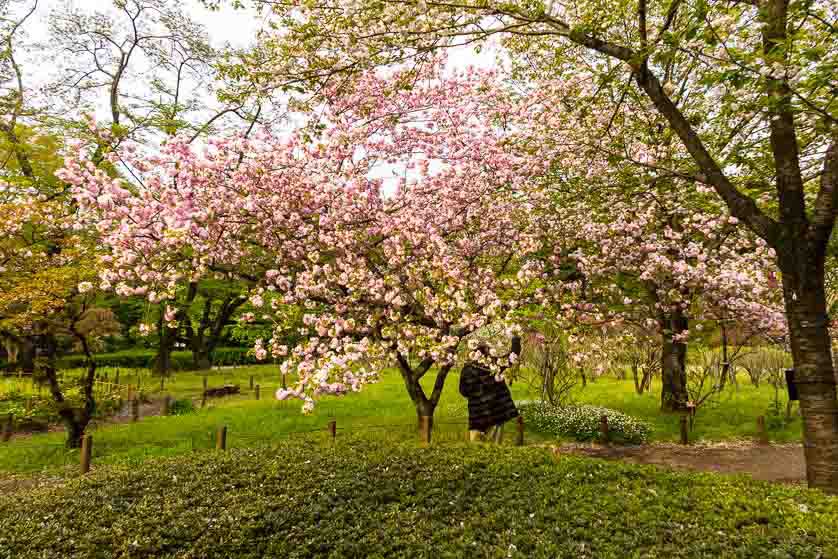
Blossoming Plum Tree, Jindai Botanical Garden
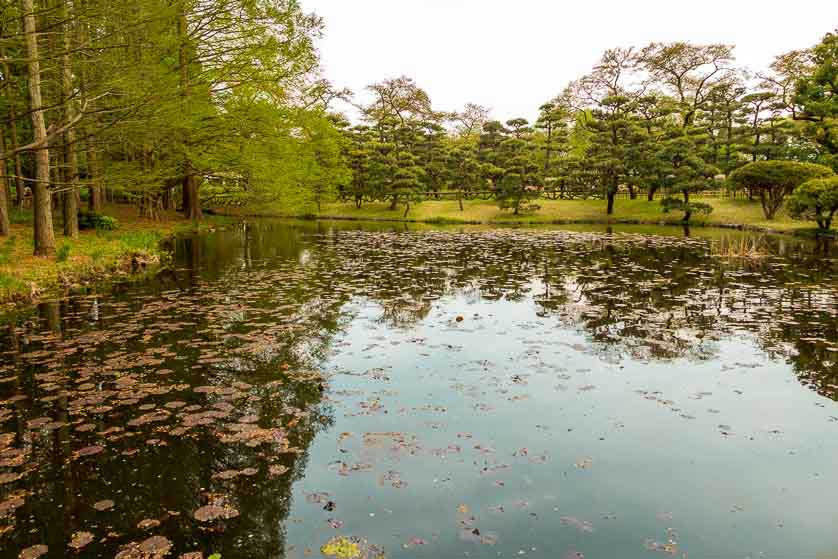
Pond at Jindai Botanical Garden
Practical information for visitors: Location, access, and admission
Jindai Botanical Garden is located in Chofu City, in the western part of Tokyo. Its convenient location makes it easily accessible from central Tokyo, perfect for a day trip or a relaxing afternoon away from the city's hustle and bustle.
Access to the garden is straightforward:
- From Shinjuku Station, take the Keio Line to Chofu Station (about 15 minutes on a limited express train).
- From Chofu Station's North Gate, take Keio Bus no.34 to Jindai Botanical Garden (about 20 minutes).
- Alternatively, buses are available from Mitaka Station or Kichijoji Station on the JR Chuo Line.
Admission fees and opening hours:
- Adults: 500 yen
- Seniors (65 and older): 250 yen
- Children: 200 yen (free for elementary school students and younger)
- Open: 9:30 AM to 5:00 PM (last entry at 4:00 PM)
- Closed: Mondays (or the following day if Monday is a national holiday) and from December 29 to January 1
Visitors should note that while the main garden requires an admission fee, there are free areas available for exploration, including an aquatic plant garden and the Center for Plant Diversity.
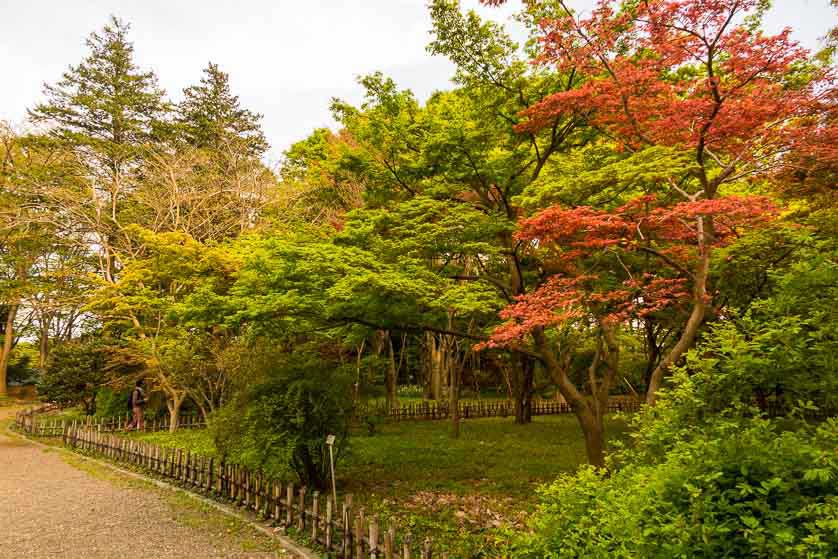
Maple Grove, Jindai Botanical Garden
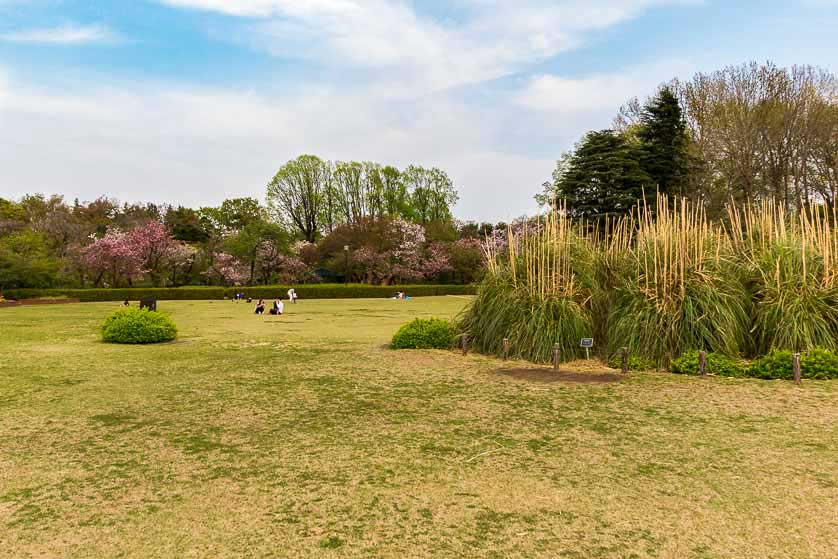
Lawn with pampas grass, Jindai Botanical Garden, Chofu
Educational opportunities and conservation efforts
Jindai Botanical Garden is not just a place of beauty; it's also a center for education and conservation. The garden plays a crucial role in preserving endangered Japanese plant species and educating the public about the importance of biodiversity.
The Center for Plant Diversity, opened in 2012, is at the forefront of these efforts. This facility focuses on:
- Preserving and propagating Tokyo's endangered botanical species
- Collecting and disseminating information about plant diversity
- Promoting the importance of botanical conservation to the public
The center features both indoor and outdoor exhibition spaces, offering interactive learning materials and displays of plant life from different regions of Japan. Although primarily in Japanese, the center's visual displays make it accessible and informative for all visitors.
Throughout the year, the garden hosts various exhibitions and activities related to gardening and plant conservation. These events provide valuable opportunities for local citizens and visitors to learn about horticulture, ecology, and the critical role of plants in our environment.
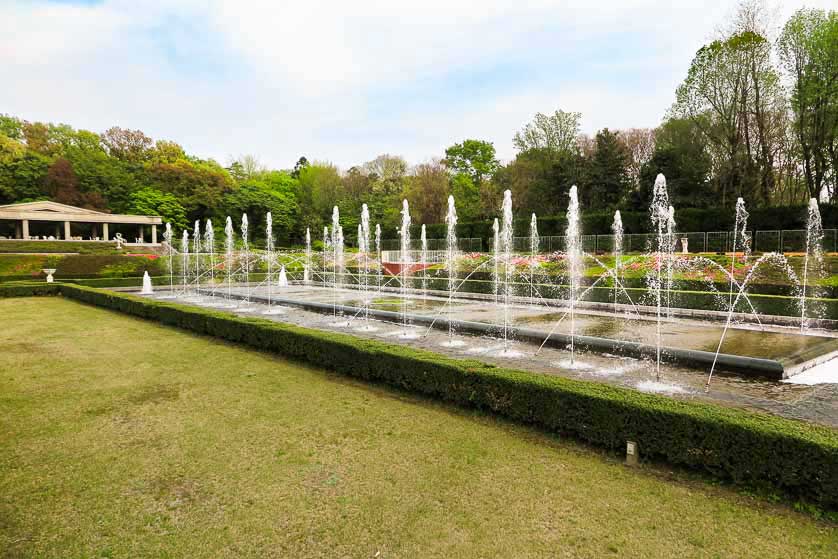
Fountain, Jindai Botanical Garden
Events and festivals at Jindai Botanical Garden
Jindai Botanical Garden hosts a variety of events and festivals throughout the year, celebrating the changing seasons and highlighting different aspects of its diverse plant collection. These events not only showcase the garden's natural beauty but also offer unique experiences and educational opportunities for visitors.
Some of the notable events include:
- Spring Rose Festival: Held during the peak blooming season of the roses, this festival features special tours, workshops, and cultural performances.
- Cherry Blossom Festival: Celebrating the blooming of the garden's 600 cherry trees, with extended hours for evening viewing and special illuminations.
- Autumn Rose Show: A second chance to enjoy the roses in full bloom, often accompanied by art exhibitions and gardening demonstrations.
- Chrysanthemum Exhibition: Showcasing the beauty of Japan's imperial flower in various artistic arrangements.
- Plum Blossom Festival: Early in the year, celebrating the blooming of the garden's 210 plum trees with music performances and food stalls.
Additionally, the garden regularly hosts seasonal exhibitions of violets, bonsai, and traditional Japanese garden plants. These events often include hands-on activities, guided tours, and expert talks, providing visitors with deeper insights into horticulture and Japanese plant culture.
Whether you're a plant enthusiast, a nature lover, or simply seeking a peaceful retreat, Jindai Botanical Garden offers a rich tapestry of experiences throughout the year. Its combination of natural beauty, educational value, and cultural significance makes it a must-visit destination for anyone exploring the greener side of Tokyo.















